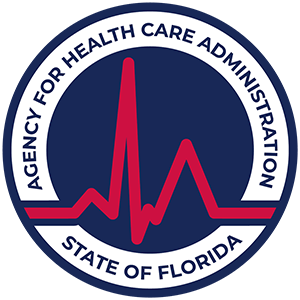Causes of Prescription Pill Abuse
Explore the causes of prescription pill abuse, from fear of addiction to social factors that influence misuse.

Reasons for Prescription Drug Misuse
Understanding the reasons behind prescription drug misuse is essential to addressing this growing issue. Many individuals, including teens and adults, abuse these medications for various reasons.
Fear of Addiction
Fear of addiction is a significant concern among those misusing prescription drugs. Many people worry about becoming dependent on medicines that are typically prescribed for legitimate medical conditions. This anxiety can drive some individuals to misuse these medications as they seek control over their use. Prescription drug abuse rates are notably higher among teens and young adults, who may be particularly vulnerable to these fears.
Getting High
Among adults who misused prescription medications in 2015, a substantial number reported that their primary motive was to feel good or get high, with 11.7 percent citing this reason for their last misuse [2]. This trend also extends to the misuse of prescription stimulants; approximately 4.8 million adults misused these drugs, often with the intention to help them stay alert or enhance concentration during studying. The reasons for stimulant misuse varied, with 28.4 percent using them to remain awake, 26.2 percent for concentration, and 22.4 percent for studying [2].
Reason for MisusePercentageGetting High11.7%To Help Stay Awake28.4%To Help Concentrate26.2%To Help Study22.4%
Physical Pain Relief
Physical pain relief is a prominent reason for the misuse of prescription pain relievers. In 2015, it was reported that 63.4 percent of adults who misused prescription pain medications did so to alleviate physical pain [2]. This misuse often stems from the desire to manage pain outside of medical supervision, sometimes leading to dependency or worsening health outcomes.
Recognizing these underlying causes of prescription pill abuse can help in the development of effective interventions and treatments for those affected. For further insights into abuse statistics and prevention efforts, explore articles on prescription drug abuse statistics and why are prescription drugs so commonly abused?.
Commonly Misused Prescription Drugs
Understanding which prescription medications are most frequently misused can provide insight into the broader context surrounding the causes of prescription pill abuse. Below are the major categories of commonly misused prescription drugs.
Prescription Pain Relievers
Prescription pain relievers, also known as opioids, are often misused for their ability to effectively alleviate physical pain. In 2015, nearly 63.4 percent of adults reported misusing these medications with the primary goal of pain relief. The allure of these drugs stems from their potent effects, but this often leads to dependency and abuse.
Reason for MisusePercentageTo relieve physical pain63.4%To feel good or get high11.7%To relax or relieve tension10.9%
Prescription Tranquilizers
Prescription tranquilizers, including benzodiazepines, are commonly misused for their calming effects. In 2015, about 5.7 million adults misused these medications at least once in the year. The most prevalent reasons for this misuse include relaxation and sleep enhancement.
Reason for MisusePercentageTo relax or relieve tension46.2%To help with sleep21.2%
For more information about the dangers of mixing these drugs with alcohol, refer to our article on why is mixing prescription drugs with alcohol dangerous?.
Prescription Stimulants
Prescription stimulants, which are often used to treat ADHD, are also misused, particularly among students and working professionals. Approximately 4.8 million adults misused these drugs in 2015, commonly for reasons such as improving alertness and concentration.
Reason for MisusePercentageTo help be alert or stay awake28.4%To help concentrate26.2%To help study22.4%
Prescription Sedatives
Prescription sedatives, used primarily for sleep disorders, have a notable misuse rate as well. In 2015, about 1.4 million adults misused these medications, often seeking better sleep or relaxation.
Reason for MisusePercentageTo help with sleep73.2%To relax or relieve tension12.0%To feel good or get high5.1%
For further insights into the statistics surrounding prescription drug misuse, you can view our article on prescription drug abuse statistics. Understanding these commonly misused drugs and their motivations can help in addressing and preventing prescription drug abuse.
Risks of Prescription Drug Misuse
Prescription drug misuse carries significant risks that can affect individuals physically, mentally, and socially. Understanding these risks is crucial for prevention and education efforts.
Dependence
Dependence on prescription medications is a serious concern. According to studies, many individuals misuse prescription opioids primarily to relieve physical pain. While this is a valid reason for taking the medications, misuse can quickly lead to a cycle of dependency. This occurs when the body becomes accustomed to the drug's effects, leading to increased tolerance and withdrawal symptoms when the drug is not available. In fact, in 2015, approximately 63.4 percent of adults misusing prescription pain relievers did so for pain relief, but misuse can often escalate to a reliance on the medication for daily functioning.
Overdose
Overdose is one of the most dangerous risks associated with prescription pill misuse. The misuse of opioids, tranquilizers, and other drugs can result in consuming lethal doses. Many individuals underestimate the potency of these medications, especially when combined with other substances such as alcohol. For instance, a significant number of overdose cases are attributed to mixing prescription drugs and alcohol, enhancing the sedative effects and leading to respiratory failure. This raises a critical concern regarding the safe usage of these medications. For more information on the dangers of such combinations, refer to our article on why is mixing prescription drugs with alcohol dangerous?.
Type of DrugOverdose Risk (%)Prescription OpioidsHighPrescription TranquilizersModeratePrescription StimulantsLow
Death
The ultimate consequence of prescription drug misuse can tragically be death. Overdose incidents have been on the rise, particularly with opioid misuse, which has led to a public health crisis. In 2015, it was estimated that a significant number of deaths were directly linked to the misuse of prescription medication. The alarming statistics highlight the need for awareness and immediate interventions in communities. For comprehensive data on this issue, consult the prescription drug abuse statistics.
Preventing prescription drug misuse is essential to mitigate these severe risks. Understanding the causes of prescription pill abuse, alongside these risks, can aid in fostering a more educated and health-conscious society.
Prescription Drug Abuse Among Different Age Groups
Prescription drug misuse spans various age groups, each experiencing unique challenges and triggers. Understanding these differences provides insight into the causes of prescription pill abuse.
Teens and Young Adults
Prescription drug abuse is particularly prevalent among teens and young adults. This demographic often abuses medication for various reasons, including the fear of becoming addicted to prescribed medicines or the desire to achieve a high. According to studies, many younger individuals misuse prescription medications, often away from medical supervision, which can lead to severe consequences.
SubstancePercentage of AbusePrescription Pain Relievers8.3%Prescription Stimulants6.8%Prescription Tranquilizers4.2%
Older Adults
While teens and young adults lead in the percentage of abuse, older adults are not immune to prescription drug misuse. This age group may misuse medications due to health challenges, including chronic pain conditions often treated with opioids. As prescriptions for painkillers rose in the 1980s and 1990s, many older adults began to rely on these medications more heavily. Consequently, they may become dependent or experience adverse effects due to polypharmacy, which increases the risk of unintentional overdose and other health issues.
Commonly Misused MedicationsAge GroupPercentage of AbuseOpioids65 and older8%Benzodiazepines65 and older6%
Midlife Americans
Midlife Americans are increasingly showing a rise in prescription drug misuse, possibly linked to perceived economic distress. This age group is facing numerous challenges, such as job loss, financial worries, and health issues, all of which may contribute to the misuse of prescribed medications as a coping mechanism [4]. Efforts to curb misuse within this demographic are vital, especially considering their unique position in the workforce and social dynamics.
SubstanceEstimated Abuse RatePrescription Opioids3.9%Anti-anxiety Medications2.3%
Understanding prescription drug abuse among these diverse age groups highlights the complexity of the issue and emphasizes the need for targeted interventions. General awareness and education on responsible medication use can aid in addressing this growing concern. For additional data and information on trends, refer to our article on prescription drug abuse statistics.
Social Factors Influencing Drug Use
Social factors play a significant role in the misuse of prescription drugs. These influences can range from social isolation to peer dynamics and established behavioral patterns.
Social Isolation
Social isolation is linked to higher rates of substance misuse. Individuals who lack social connections may turn to prescription drugs as a means of coping with their feelings of loneliness and despair. Conversely, strong familial ties and social competence are associated with lower rates of drug use. This dichotomy highlights the importance of social networks in shaping behaviors related to drug abuse [5].
FactorImpact on Drug UseSocial IsolationIncreases likelihood of drug misuseStrong Family TiesDecreases likelihood of drug misuse
Peer Influence
Peer influence is particularly potent among adolescents and young adults. The pressure exerted by friends, especially in social settings like parties, often outweighs the guidance provided by parents or community initiatives. Research indicates that the presence of friends who use drugs is a reliable predictor of an individual's likelihood to engage in similar behaviors.
Peer Influence TypeImpact on Drug UseDrug Offers at PartiesIncreases likelihood of useSupportive Drug-Using FriendsMaintains drug-using behavior
Social Learning Models
Social learning theories suggest that drug use behaviors are learned through the imitation of peers who model drug use, which is reinforced by social acceptance and approval. This means that behaviors and attitudes regarding drugs are transmitted within social groups. As individuals observe their peers using drugs and receiving positive reinforcement, they may adopt similar behaviors. Consequently, these social learning models illustrate how drug use can be cultivated and perpetuated within groups [5].
ModelExplanationSocial LearningDrug use is adopted by imitating peersReinforcementPositive feedback from peers maintains drug use
Understanding these social factors is essential for addressing the causes of prescription pill abuse. By fostering supportive social networks and improving peer dynamics, communities can potentially mitigate the risk of prescription drug misuse. For more insights into the broader context of prescription drug abuse, explore our article on why are prescription drugs so commonly abused?.
Addressing Prescription Drug Misuse
Combating prescription drug misuse involves a multi-faceted approach encompassing early intervention, preventive measures, and regulatory responses. Each of these strategies plays a crucial role in reducing the incidence of prescription pill abuse.
Early Intervention
Early identification of prescription drug abuse is essential in preventing the problem from escalating into a full-blown addiction. Recognizing the symptoms of misuse can lead to timely intervention, which may involve counseling, therapy, or changes in medication prescriptions [1]. Medical professionals and caregivers should be vigilant in monitoring patients, particularly those prescribed high-risk medications such as opioids and stimulants.
Preventive Measures
Preventive measures are vital to thwart prescription drug abuse before it starts. Educating the public about the risks associated with misuse is one effective strategy. Specific steps designed to help prevent teens and young adults from abusing prescription medications must be implemented, as these groups often represent a significant portion of those misusing these substances [1]. Providing information about safe storage and disposal of medications can also help reduce access to prescription drugs that may be misused.
Additionally, creating awareness about the dangers of mixing prescription drugs with alcohol is critical. The effects of combining these substances can lead to severe health risks, as highlighted in articles discussing the risks of mixing prescription drugs with alcohol.
Regulatory Responses
Regulatory responses are necessary to control and monitor the prescribing and dispensing of medications. Physicians should exercise caution when interpreting research funded by pharmaceutical companies and be aware of potential conflicts of interest. Improved communication between healthcare providers and patients can foster an understanding of the risks associated with prescription medications.
Additionally, a comprehensive approach to address the issue effectively includes disseminating general principles and heuristics about medications to clinicians, patients, and consumers [6]. This initiative enhances the safety and effectiveness of medication use and curbs prescription drug misuse across various demographics, especially among individuals with low socioeconomic status and older adults [4].
In summary, addressing prescription drug misuse requires coordinated efforts spanning various strategies, which can collectively mitigate the causes of prescription pill abuse and promote safer medication practices. For more insights into the dynamics of prescription drug abuse, explore our resources on why are prescription drugs so commonly abused? and prescription drug abuse statistics.
References
[2]:
[3]:
[4]:
[5]:
[6]:














.svg)








